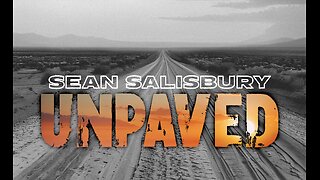Premium Only Content

A Decade of Sun
2020, NASA’s Solar Dynamics Observatory — SDO — has now been watching the Sun non-stop for over a full decade. From its orbit in space around the Earth, SDO has gathered 425 million high-resolution images of the Sun, amassing 20 million gigabytes of data over the past 10 years. This information has enabled countless discoveries about the workings of our closest star and how it influences the solar system. With a triad of instruments, SDO captures an image of the Sun every 0.75 seconds. The Atmospheric Imaging Assembly (AIA) instrument alone captures images every 12 seconds at 10 different wavelengths of light. This 10-year time-lapse showcases photos taken at a wavelength of 17.1 nanometers, which is an extreme ultraviolet wavelength that shows the Sun’s outermost atmospheric layer — the corona. Compiling one photo every hour, the movie condenses a decade of the Sun into 61 minutes. The video shows the rise and fall in activity that occurs as part of the Sun’s 11-year solar cycle and notable events, like transiting planets and eruptions. The custom music, titled “Solar Observer,” was composed by musician Lars Leonhard (https://www.lars-leonhard.de). While SDO has kept an unblinking eye pointed toward the Sun, there have been a few moments it missed. The dark frames in the video are caused by Earth or the Moon eclipsing SDO as they pass between the spacecraft and the Sun. A longer blackout in 2016 was caused by a temporary issue with the AIA instrument that was successfully resolved after a week. The images where the Sun is off-center were observed when SDO was calibrating its instruments. SDO and other NASA missions will continue to watch our Sun in the years to come, providing further insights about our place in space and information to keep our astronauts and assets safe. Some noteworthy events appear briefly in this time-lapse. Use the time links below to jump to each event, or follow the links to more detailed views. 6:20 June 7, 2011-- A massive prominence eruption explodes from the lower right of the Sun. See the video: https://www.youtube.com/watch?v=HloC4xMg4Z4 https://svs.gsfc.nasa.gov/10801 12:24 June 5, 2012-- The transit of Venus across the face of the Sun. Won’t happen again until 2117. See the video: https://www.youtube.com/watch?v=4Z9rM8ChTjY https://svs.gsfc.nasa.gov/10996 13:06 July 19, 2012-- A complex loop of magnetic fields and plasma forms and lasts for hours. See the video: https://www.youtube.com/watch?v=HFT7ATLQQx8 https://svs.gsfc.nasa.gov/11168 13:50 Aug. 31, 2012-- The most iconic eruption of this solar cycle bursts from the lower left of the Sun. See the video: https://www.youtube.com/watch?v=GrnGi-q6iWc https://svs.gsfc.nasa.gov/11095 20:25 Sept. 29, 2013-- A prominence eruption forms a long 'canyon’ that is then covered with loops of plasma. See the video: https://www.youtube.com/watch?v=Qurh_BZ-O2E https://svs.gsfc.nasa.gov/11379 26:39 Oct. 8, 2014-- Active regions on the Sun resemble a jack o’ lantern just in time for Halloween.
-
 2:17:22
2:17:22
The Quartering
6 hours agoFBI Charges For Letitia James, New Pope, Diddy Trial Bombshell, Update On The Race Wars & More
203K48 -
 LIVE
LIVE
New York Post
7 hours agoNew pope elected: Watch live from St. Peter's Square
8,658 watching -
 1:23:14
1:23:14
Darkhorse Podcast
4 hours agoBy Any Means Necessary? The 275th Evolutionary Lens with Bret Weinstein and Heather Heying
32.2K11 -
 1:00:58
1:00:58
Stephen Gardner
3 hours ago🔥THIS 9/11 Evidence Puts My Life At Risk - New Investigation Needed NOW!
55K28 -
 1:03:56
1:03:56
Jeff Ahern
3 hours ago $0.62 earnedThursday thrash with Jeff Ahern
24.8K1 -
 LIVE
LIVE
StoneMountain64
4 hours agoKar98k Optic IS BACK after HDR Nerf 😭
167 watching -
 1:23:33
1:23:33
The HotSeat
2 hours agoGulf of America CONFIRMED — Hakeem Jeffries Throws a Fit + Joe Biden Embarrasses Himself on The View
15.6K1 -
 27:33
27:33
Economic War Room
3 hours agoUnlocking Success: The Kingdom System | Guest: Charlie Lewis | Ep 344
8.62K -
 1:47:03
1:47:03
Russell Brand
6 hours agoJews, Gorillas and Kanye West: DARK RUSSELL THURSDAY – SF580
150K25 -
 44:36
44:36
Sean Unpaved
5 hours agoGridiron Goverance & Future Stars: Fixing CFB, Flagg's Pro Potential & Brady's Raiders QB Impact
52.2K2